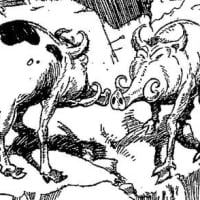Welcome to the Hardcore Husky Forums. Folks who are well-known in Cyberland and not that dumb.
Historical industry photo porn open thread
Comments
-
I came (lol) for the porn but stayed for the logging pics. Great thread!
-
Logging near downtown Puyallup, 1889

-
Is that the 3 Huard brothers at the bottom?JaWarrenJaHooker said:Logging near downtown Puyallup, 1889

-
-
-
-
I love old sawmills. I actually built some models of them (another hobby of mine - I don't sleep). Maybe I will add some old industry models I have built?LebamDawg said:A few from West Lewis County -
Henry the logger and a logging truck

this screen shot is of the Dryad Lumber Mill on Luedenhaus Rd in west Lewis County. We did a remodel (due to damage on the original house built in 1911) and the ship lap is all labelled with this company. We also purchased 2 acres that ran along side our 8 acres and found out that it was the mill that bought the property. The lot is 1340 ft deep and 66 feet wide and was an old rail line that they hauled the logs out on. I know, CSB
@GrundleStiltzkin










